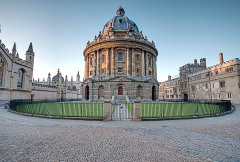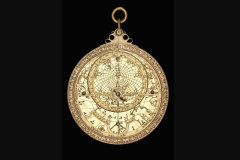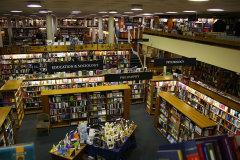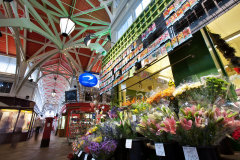The main Tourist Information Office is on Broad Street in the centre of town; you can get maps and tickets here, and there is also a bureau de change with good exchange rates. There is a hop-on, hop-off open-top bus tour of the city, one of whose stops is outside the gates of Trinity College on Broad Street (and another opposite Brown’s Restaurant near the Maths Institute).
There are many walking tours of the city, both “official” and otherwise. The general tours are perhaps the best way to get a look inside the colleges, which are not always open and welcoming to individual tourists (but see below about Oxford Open Doors). However, there are also many specially themed tours (such as JRR Tolkein and CS Lewis, Alice in Wonderland and Harry Potter, Gargoyles, Science in Oxford). Alternatively, you could buy a guide booklet in the Tourist Information Office or in Blackwell’s and guide yourself.

Museums
Oxford has many excellent museums, essentially all free to enter and associated with the University. My favourite is the Pitt-Rivers Museum, a treasure trove of anthropological artifacts; you reach this through the Museum of Natural History on Parks Road—home of dinosaur skeletons, rocks, the relics of the Oxford dodo, and the site of the 1851 debate between Huxley and Wilberforce about Darwin’s Origin of Species.
The Ashmolean Museum of art and archaeology on St Giles has ancient artifacts and modern art; it is Britain’s first public museum, and the oldest university museum in the world, and has recently had a stunning renovation (our Industry Reception will be held there on Thursday evening). The Weston Library of the Bodleian has two galleries, one showing a collection of assorted treasures in the library’s holdings, the other a selection of materials illuminating the life of Jane Austen (our banquet will be held in the Blackwell Hall of the Weston Library on Wednesday evening). Both the Ashmolean and the Weston Library have good cafes. The Museum of the History of Science has an unrivalled collection of early scientific instruments, especially astrolabes; its building was the original location of the Ashmolean Museum. The Bate Collection on St Aldates is a splendid of musical instruments.

The Botanic Garden, opposite Magdalen College on Rose Lane, offers a quiet spot once you get off the road; this one does charge an admission fee.
In case you’re still around at the end of the week, Oxford Open Doors takes place on the weekend of 9th and 10th September, and opens many buildings that are not normally accessible to the public.
Shopping
Oxford is not a great shopping destination. My one recommendation is to visit Blackwell’s Bookshop on Broad Street, an Oxford landmark; the Norrington Room in the basement is listed in the Guinness Book of Records as the “largest single room selling books” in the world.

Most of the rest of the interesting shops are located in the 18th Century Covered Market. If you’re looking for gifts or souvenirs, the best places are the gift shops of the various museums listed above, or the Oxford University Shop on High Street. For cheaper unofficial Oxford-branded hoodies and teddy bears, there are various shops on Broad Street. For unusual liquid gifts, I can recommend Demijohn, just around the corner in Little Clarendon St, who sell boutique spirits, oils, and vinegars in pretty bottles. There is a very popular outlet mall for designer goods at Bicester Village (15 minutes by train from Oxford Station, via Oxford Parkway).

There are two basic supermarkets, Tesco and Sainsbury’s, on Magdalen Street, and a fancier one in Marks and Spencer’s on Queen Street. There’s a good pharmacy in Boswell’s department store, and Post Offices on St Giles and on Walton Street.